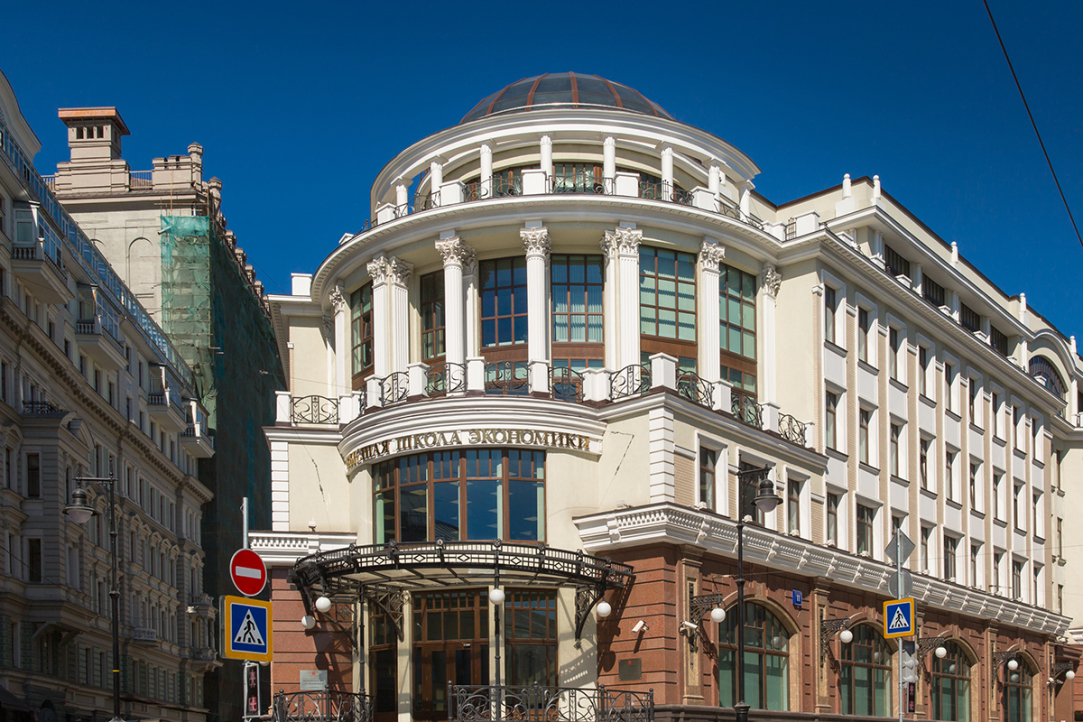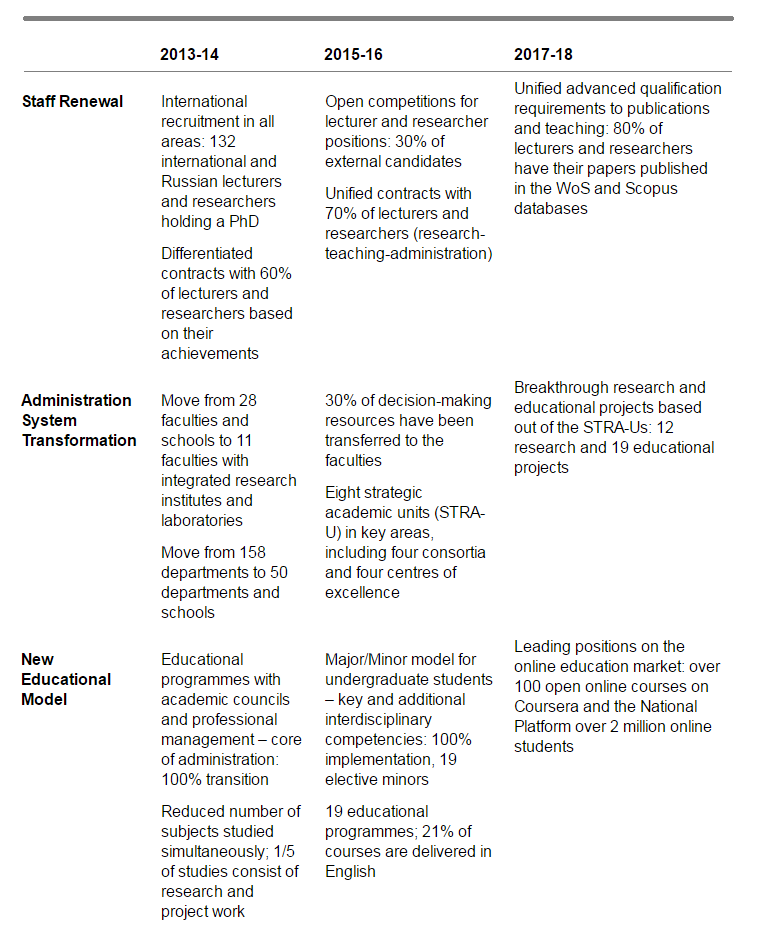HSE Presented Development Roadmap to Project 5-100 International Council

On March 17, 2017, a regular meeting of the Project 5-100 Council on Competitiveness Enhancement of Leading Russian Universities took place in Moscow. HSE representatives told the Council, which includes international experts, about the University’s achievements following the implementation of the first half of the Project. They also discussed their upcoming development plans.
First Vice Rector Vadim Radaev made a presentation on the University’s efforts before the Council. He stressed that HSE is continuing to recruit lecturers and researchers from the international market, and, at the same time, is improving the requirements (particularly, in regards to publication activities) to current HSE staff. Furthermore, HSE is creating user-friendly administrative services aimed at improving the effectiveness of its main area of operations, research and education.
RADICAL TRANSFORMATIONS AT HSE
One of the results of HSE’s involvement in the Project is its improved positions in global university rankings, including rankings by subject. For example, this year HSE can be proud of holding four positions in Top-100 in international rankings: it places 83rd for ‘Business and Economics’ in Times Higher Education (the only Russian university on this ranking) and is one of the Top-100 in three subjects in QS: Economics & Econometrics, Politics & International Studies, and Sociology. In addition, HSE appears in global rankings’ top lists by most subjects among the Project’s universities (in 13 QS rankings by subject, e.g., Economics, Computer Science, Linguistics and Law). There are also subjects where HSE is the only Russian university on a top list, such as Finance & Accounting (within the 101-150 positions).
Furthermore, HSE has created eight strategic academic units (STRA-Us), whose task is to reinforce interdisciplinary ties and research at the University. Under the auspices of the STRA-Us, 12 research projects were presented to the Council.
One of our remarkable research projects is the development of tools to detect and forecast new trends in science, technology, and innovation. HSE experts in foresight, mathematics, and computer science are engaged in this project together with their colleagues from the University of Manchester.
Another example is the Russia Longitudinal Monitoring Survey – Higher School of Economics (RLMS-HSE). One of the partners in this project is the University of North Carolina at Chapel Hill. This unique longitudinal survey has been carried out for over 20 years. Its data is used to evaluate inequality, poverty, consumer behavior, and living standards in Russian households.
In addition, a new project, which involves social scientists, urbanists, and engineers, is focused on the development of flexible management technologies for cities. Particularly, they aim to optimize systems of transportation management, power consumption, etc. The Russian researchers work in collaboration with colleagues from MIT, New York University, and the Institute for Advanced Architecture of Catalonia, as well as such leading companies as Uber, Intel, and Yandex.
As the HSE representatives answered questions from the Project 5-100 Council’s members, they emphasized the University’s effort to develop students’ entrepreneurial skills coupled with research in this area. Furthermore, three days before the Council meeting, the HSE Business Incubator held the ninth ceremony for the Start-up of the Year Award for the highest achieving young entrepreneurs.
A total of 21 universities are currently involved in the Project 5-100 today. According to Olga Golodets, Deputy Prime Minister of the Russian Government, they have become recognized globally, and the total number of international students has grown. The Project Council evaluates the development performance of each participant institution annually, and gives specific recommendations (although the universities themselves choose the trajectories to achieve their competitiveness goals).

